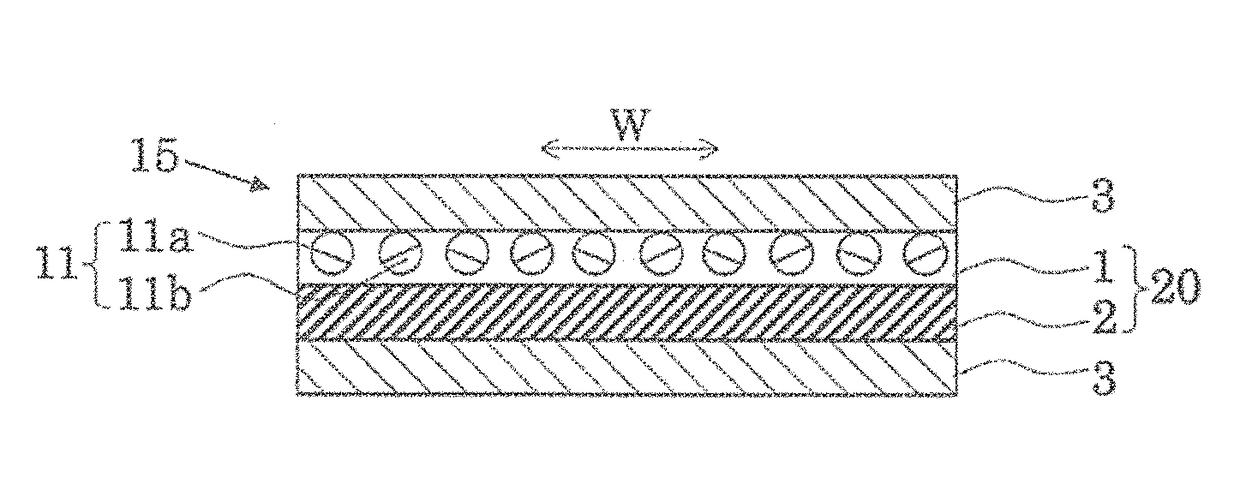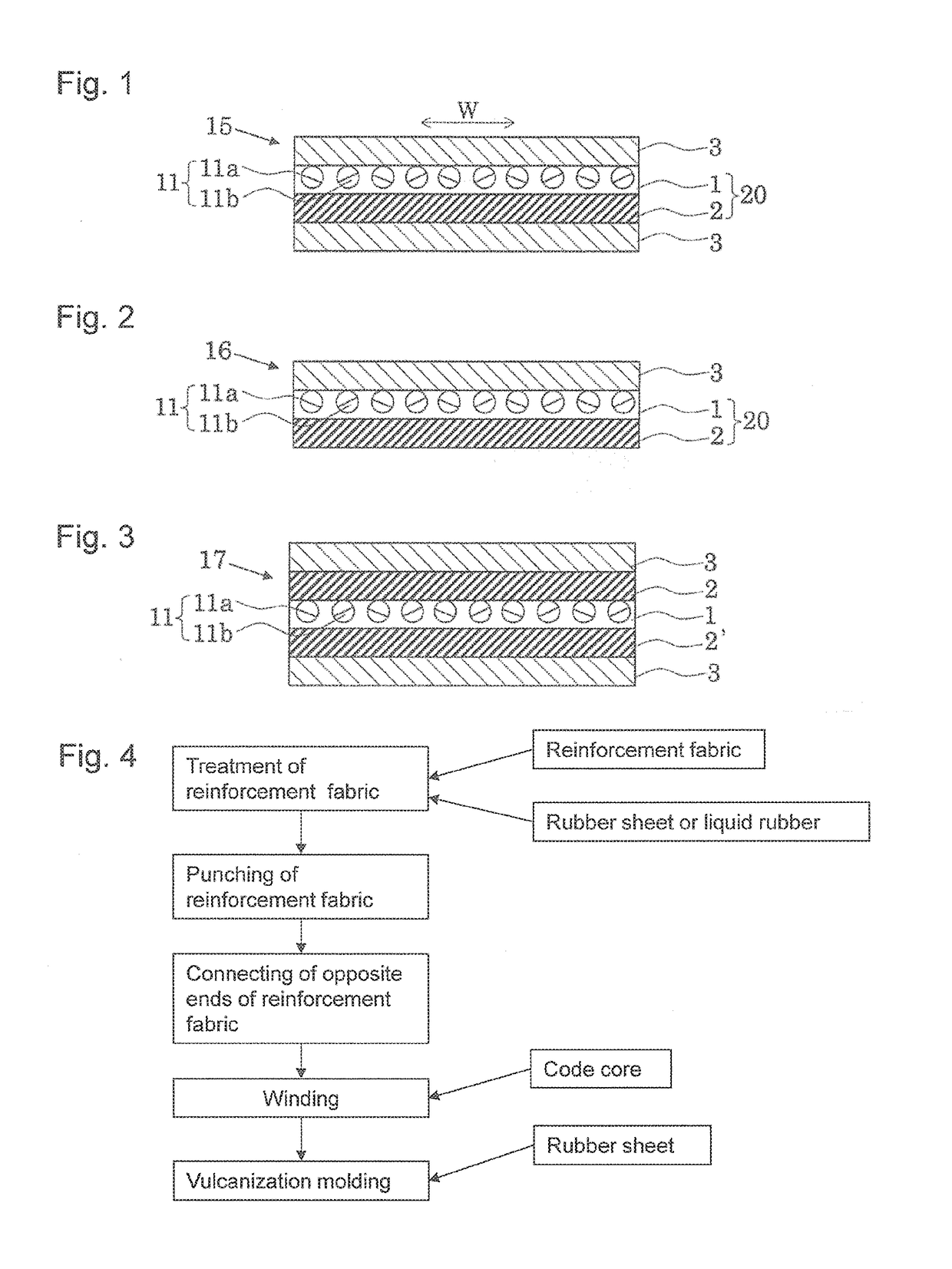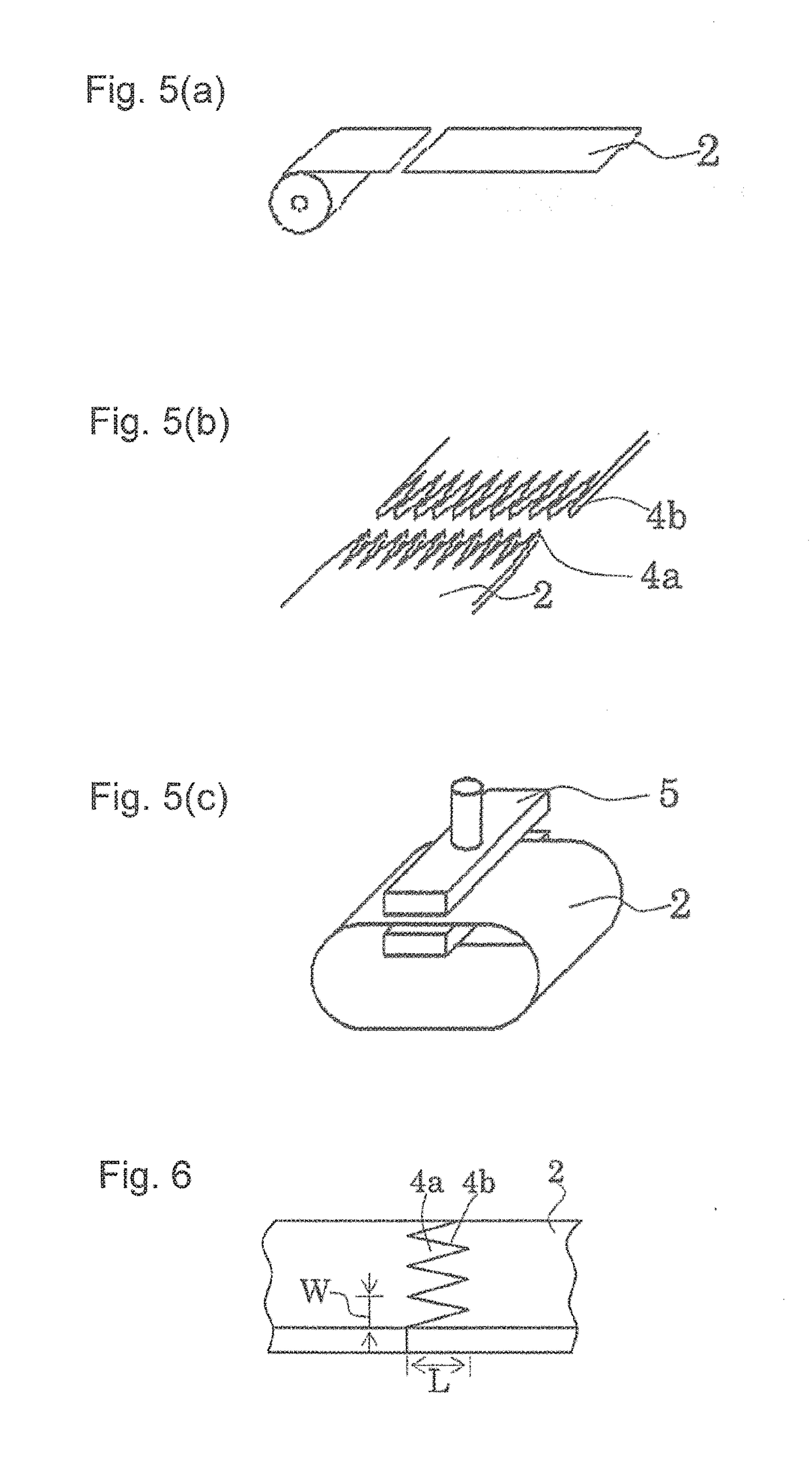Endless flat belt and method for manufacturing the same
a technology of end-to-end belts and flat belts, which is applied in the direction of mechanical equipment, transportation and packaging, and other domestic objects, can solve the problems of cracks at the joint parts, poor flexibility of adhesives, and poor durability of adhesives, so as to prolong the service life of belts, stabilize the tension and travel performance of belts, and ensure the stability of the bel
- Summary
- Abstract
- Description
- Claims
- Application Information
AI Technical Summary
Benefits of technology
Problems solved by technology
Method used
Image
Examples
example 1
[0081]After sticking a nitrile rubber sheet with a thickness of 0.4 mm to a polyester canvas (reinforcement fabric) (refer to FIG. 5(a)), this was subjected to punching into a sawtooth shape, thereby separately forming convex parts and concave parts (refer to FIG. 5(b)). The convex parts were respectively disposed inside the concave parts and pressed at 100° C. (refer to FIG. 5(c)) into an endless canvas connected with each other through a finger joint shape with a width W of 15 mm and a length L of 70 mm as shown in FIG. 6.
[0082]Subsequently, the endless canvas was wound around the driver pulley 7a and the driven pulley 7b of the cord winding apparatus 7 as shown in FIG. 9. A twisted yarn obtained by uniformly arranging polyamide 46 of 470 dtex and then twisting up to 5600 dtex was used as a cord core. The cord core was spirally buried in the nitrile rubber sheet in the endless canvas while controlling the tension of the cord core by the tension control apparatus. Thereafter, a pol...
example 2
[0084]An endless flat belt having the structure shown in FIG. 3 and having a thickness of 3.2 mm and a circumferential length of 1500 mm was obtained in the same manner as in Example 1, except that polyamide 66 fabric of 5600 dtex was used as a cord core.
example 3
[0085]An endless flat belt having the structure shown in FIG. 3 and having a thickness of 3.2 mm and a circumferential length of 1500 mm was obtained in the same manner as in Example 2, except that opposite ends of a polyester canvas (reinforcement fabric) were sewn together in abutment against each other as shown in FIG. 8.
PUM
| Property | Measurement | Unit |
|---|---|---|
| thickness | aaaaa | aaaaa |
| circumferential length | aaaaa | aaaaa |
| length | aaaaa | aaaaa |
Abstract
Description
Claims
Application Information
 Login to View More
Login to View More - R&D
- Intellectual Property
- Life Sciences
- Materials
- Tech Scout
- Unparalleled Data Quality
- Higher Quality Content
- 60% Fewer Hallucinations
Browse by: Latest US Patents, China's latest patents, Technical Efficacy Thesaurus, Application Domain, Technology Topic, Popular Technical Reports.
© 2025 PatSnap. All rights reserved.Legal|Privacy policy|Modern Slavery Act Transparency Statement|Sitemap|About US| Contact US: help@patsnap.com



